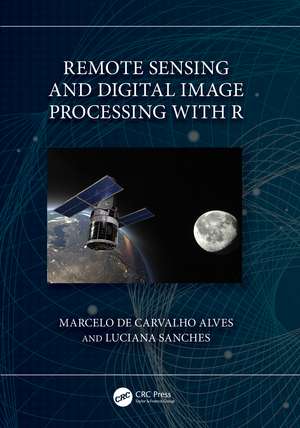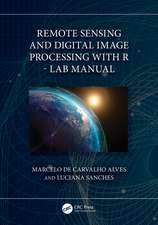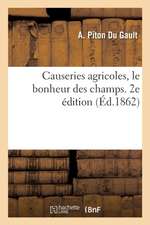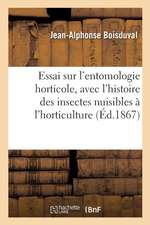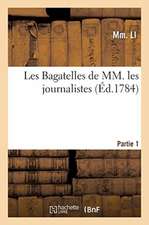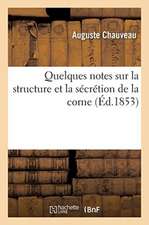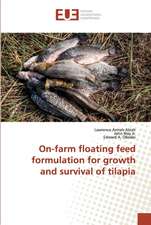Remote Sensing and Digital Image Processing with R
Autor Marcelo de Carvalho Alves, Luciana Sanchesen Limba Engleză Hardback – 30 iun 2023
Features
- Explains the theory of passive and active remote sensing and its applications in water, soil, vegetation, and atmosphere.
- Covers data analysis in the free and open-source R platform, which makes remote sensing accessible to anyone with a computer.
- Includes case studies from different environments with free software algorithms and an R toolset for active learning and a learn-by-doing approach.
- Provides hands-on exercises at the end of each chapter and encourages readers to understand the potential and the limitations of the environments, remote sensing targets, and process.
- Explores current trends and developments in remote sensing in homework assignments with data to further explore the use of free multispectral remote sensing data, including very high spatial resolution data sources for target recognition with image processing techniques.
Preț: 805.92 lei
Preț vechi: 885.62 lei
-9% Nou
Puncte Express: 1209
Preț estimativ în valută:
154.21€ • 161.87$ • 127.100£
154.21€ • 161.87$ • 127.100£
Carte disponibilă
Livrare economică 20 martie-03 aprilie
Livrare express 05-11 martie pentru 60.23 lei
Preluare comenzi: 021 569.72.76
Specificații
ISBN-13: 9781032359229
ISBN-10: 1032359226
Pagini: 536
Ilustrații: 97 Tables, black and white; 2 Line drawings, color; 11 Line drawings, black and white; 203 Halftones, color; 65 Halftones, black and white; 205 Illustrations, color; 76 Illustrations, black and white
Dimensiuni: 178 x 254 x 30 mm
Greutate: 1.14 kg
Ediția:1
Editura: CRC Press
Colecția CRC Press
ISBN-10: 1032359226
Pagini: 536
Ilustrații: 97 Tables, black and white; 2 Line drawings, color; 11 Line drawings, black and white; 203 Halftones, color; 65 Halftones, black and white; 205 Illustrations, color; 76 Illustrations, black and white
Dimensiuni: 178 x 254 x 30 mm
Greutate: 1.14 kg
Ediția:1
Editura: CRC Press
Colecția CRC Press
Public țintă
Postgraduate, Professional, and Undergraduate AdvancedCuprins
1. Introduction to Remote Sensing with R 2. Remote Sensing of Electromagnetic Radiation 3. Remote Sensing Sensors and Satellite Systems 4. Remote Sensing of Vegetation 5. Remote Sensing of Water 6. Remote Sensing of Soils, Rocks, and Geomorphology 7. Remote Sensing of the Atmosphere 8. Scientific Applications of Remote Sensing and Digital Processing for Project Design 9. Visual Interpretation and Enhancement of Remote Sensing Images 10. Unsupervised Classification of Remote Sensing Images 11. Supervised Classification of Remote Sensing Images 12. Uncertainty and Accuracy Analysis in Remote Sensing and Digital Image Processing 13. Scientific Applications of Remote Sensing and Digital Image Processing to Elaborate Articles
Notă biografică
Marcelo de Carvalho Alves
Dr. Alves is an associate professor at the Federal University de Lavras, Brazil. His education includes master’s, doctoral, and post-doctoral degrees in Agricultural Engineering at Federal University of Lavras, Brazil. He has varied research interests and has published on surveying, remote sensing, geocomputation, and agriculture applications. He has over 20 years of extensive experience in data science, digital image processing, and modeling using multiscale, multidisciplinary, multispectral, and multitemporal concepts applied to different environments. Experimental field sites included a tropical forest, savanna, wetland, and agricultural fields in Brazil. His research has been predominantly funded by CNPq, CAPES, FAPEMIG, and FAPEMAT. Over the years, he has built a large portfolio of research grants, mostly relating to applied and theoretical remote sensing, broadly in the context of vegetation cover, plant diseases, and related impacts of climate change.
Luciana Sanches
Dr. Sanches graduated with a degree in Sanitary Engineering from the Federal University of Mato Grosso, Brazil, a master’s degree in Sanitation, Environment, and Water Resources from the Federal University of Minas Gerais, a PhD in Road Engineering, Hydraulic Channels, and Ports from Universidad de Cantabria, Spain, a post-doctorate degree in Environmental Physics, Brazil, and a post-doctorate degree in Environmental Sciences from the University of Reading, United Kingdom. Her education includes postgraduate degreees in Workplace Safety Engineering at Federal University of Mato Grosso, Brazil, and in Project Development and Management for Municipal Water Resources Management by the National Water Agency, Brazil. She is currently an associate professor at the Federal University of Mato Grosso, and worked for more than 20 years in research on atmosphere-biosphere interaction, hydrometeorology in various temporal-spatial scales with interpretation based in environmental modeling and remote sensing. She has been applying remote sensing in teaching and research activities to support the interpretation of environmental dynamics.
Dr. Alves is an associate professor at the Federal University de Lavras, Brazil. His education includes master’s, doctoral, and post-doctoral degrees in Agricultural Engineering at Federal University of Lavras, Brazil. He has varied research interests and has published on surveying, remote sensing, geocomputation, and agriculture applications. He has over 20 years of extensive experience in data science, digital image processing, and modeling using multiscale, multidisciplinary, multispectral, and multitemporal concepts applied to different environments. Experimental field sites included a tropical forest, savanna, wetland, and agricultural fields in Brazil. His research has been predominantly funded by CNPq, CAPES, FAPEMIG, and FAPEMAT. Over the years, he has built a large portfolio of research grants, mostly relating to applied and theoretical remote sensing, broadly in the context of vegetation cover, plant diseases, and related impacts of climate change.
Luciana Sanches
Dr. Sanches graduated with a degree in Sanitary Engineering from the Federal University of Mato Grosso, Brazil, a master’s degree in Sanitation, Environment, and Water Resources from the Federal University of Minas Gerais, a PhD in Road Engineering, Hydraulic Channels, and Ports from Universidad de Cantabria, Spain, a post-doctorate degree in Environmental Physics, Brazil, and a post-doctorate degree in Environmental Sciences from the University of Reading, United Kingdom. Her education includes postgraduate degreees in Workplace Safety Engineering at Federal University of Mato Grosso, Brazil, and in Project Development and Management for Municipal Water Resources Management by the National Water Agency, Brazil. She is currently an associate professor at the Federal University of Mato Grosso, and worked for more than 20 years in research on atmosphere-biosphere interaction, hydrometeorology in various temporal-spatial scales with interpretation based in environmental modeling and remote sensing. She has been applying remote sensing in teaching and research activities to support the interpretation of environmental dynamics.
Descriere
This new textbook on remote sensing and digital image processing of natural resources includes numerous practical, problem-solving exercises, emphasizing free and open-source platform R. It explains basic concepts of remote sensing and multidisciplinary applications and engages students in learning theory through hands-on, real-life projects.
